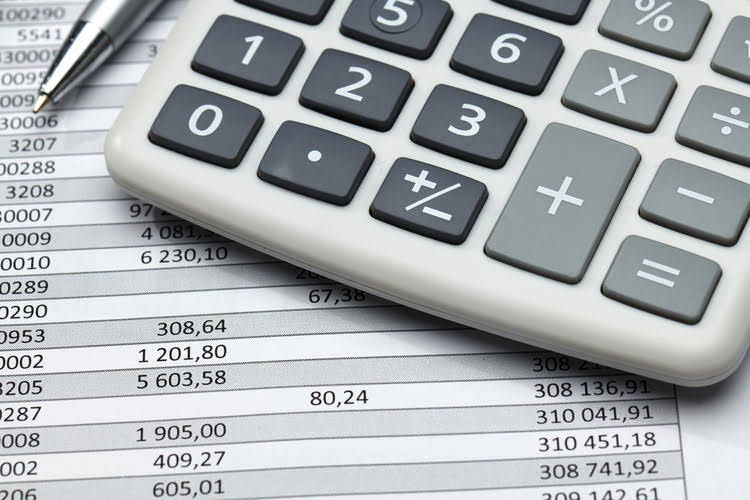
To improve an operational process, business owners should look at the accounts receivable turnover, average payment period (inventory days), and inventory turnover. The operating cycle can be expressed in a formula as the sum of the financial analysis ratios for days’ sales outstanding and the average collection period. Understanding the operating cycle in your business is essential for cash flow management. Note that only balance sheet accounts, the permanent accounts, have balances and are carried forward to the next accounting year. All temporary accounts begin the new fiscal year with a zero balance, so they can be used to accumulate amounts belonging to the new time period. Finally, when dividends is closed to retained earnings in the fourth closing entry, the $200 debit balance in the Dividends account is transferred into retained earnings as shown in Figure 3.13.
- Shaun Conrad is a Certified Public Accountant and CPA exam expert with a passion for teaching.
- The trial balance of Big Dog Carworks Corp. at January 31 was prepared in Chapter 2 and appears in Figure 3.4 below.
- The companies with high operational efficiency are typically those that provide goods or services with short shelf lives i.e., clothing, electronics, etc.
- This section shows how financial statements are prepared using the adjusted trial balance.
- As a result, maintaining a beneficial net operating cycle ratio is a life or death matter.
The Differences in Dates Between a Balance Sheet and an Income Sheet
Stakeholders, including management, the Board of Directors, lenders, shareholders, and creditors, can analyze the financial statement results for the accounting cycle period. The difference between the two formulas lies in NOC subtracting the accounts payable period. This is done because the NOC is only concerned with the time between paying for inventory to the cash collected from the sale of inventory.
6 The Closing Process
The operating cycle is important for measuring the financial health of a company. You need a dynamic, end-to-end payables solution that automates the basic accounting process, so your team can focus on growth. Upgrading to a paid membership gives you access to our extensive collection of plug-and-play Templates designed to power your performance—as well as CFI’s full course catalog and accredited Certification Programs. Shaun Conrad is a Certified Public Accountant and CPA exam expert with a passion for teaching.
Preparing adjusting entries

After almost a decade of experience in public accounting, he created MyAccountingCourse.com to help people learn accounting & finance, pass the CPA exam, and start their career. After posting the adjustment, the $100 remaining balance in unearned repair revenue ($400 – $300) represents the amount at the end of January that will be earned in the future. The preceding entry reduces the unearned revenue account by the amount of revenue earned. Revenue is recognized in the first entry (the credit to revenue), prior to the receipt of cash. The operating cycle is equal to the sum of DIO and DSO, which comes out to 150 days in our modeling exercise. At the start of the calculation, the sum of DIO and DSO represents the operating cycle – and the added step is subtracting DPO.
- Therefore, an annual accounting period could involve multiple operating cycles as shown in Figure 3.2.
- The cycle repeats itself every fiscal year as long as a company remains in business.
- The $2,200 balance represents the unexpired asset that will benefit future periods, namely, the 11 months from February to December, 2015.
- The average time it takes for a retailer’s or manufacturer’s inventory to turn to cash.
- Additionally, revenue would be understated (too low) by $300 on the income statement if the adjustment was not recorded.
Accumulated depreciation has a normal credit balance that is subtracted from a Plant and Equipment asset account on the balance sheet. Initially, the concept of crediting Accumulated Depreciation may be confusing because of how we learned to adjust prepaids (debit an expense and credit the prepaid). The Plant and Equipment asset account is not credited because, unlike a prepaid, a truck or building does not get used up and disappear. The goal in recording depreciation is to match the cost of the asset to the revenues it helped generate. For example, a $50,000 truck that is expected to be used by a business for 4 years will have its cost spread over 4 years.
Would you prefer to work with a financial professional remotely or in-person?
Chartered accountant Michael Brown is the founder and CEO of Double Entry Bookkeeping. He has worked as an accountant and consultant for more than 25 years and has built operating cycle financial models for all types of industries. He has been the CFO or controller of both small and medium sized companies and has run small businesses of his own.
How does operating cycle relate to a company’s financial health?
They also make large quantities of these items and have little to no inventory to maintain. For example, take a look at retailers like Wal-Mart and Costco, which can turn their entire inventory over nearly five times during the year. Take your learning and productivity to the next level with our Premium Templates. Access and download collection of free Templates to help power your productivity and performance.

For example, the net accounts receivable turnover is used to determine how often customers must pay for their product before they can make another purchase. Use of a checklist with deadlines in the accounting cycle improves accountability and process management. An Operating Cycle (OC) refers to the days required for a business to receive inventory, sell the inventory, and collect cash from the sale of the inventory.
- The goal in recording depreciation is to match the cost of the asset to the revenues it helped generate.
- Similarly, an efficient production process can help improve product quality and turnover speed while reducing manufacturing errors.
- The Operating Cycle is calculated by getting the sum of the inventory period and accounts receivable period.
- On the other hand, companies that sell products or services that do not have shorter life spans or require less inventory tend to be less efficient in terms of operational processes.
- For example, an efficient sales force can increase the company’s market share and reduce the time it takes to acquire new customers.
Accounts Receivable Period is equal to the number of days it takes to receive payment for goods and services sold. This is calculated by dividing 365 with the quotient of cost of goods sold and average inventory or inventory turnover. Considered from a larger perspective, the operating cycle affects the financial health of a company by giving them an idea of how much its operations will cost, as well as how quickly it can pay its debts. The length of a company’s operating cycle can impact everything from their ability to finance new growth initiatives to the interest rates they’re offered on loans.
